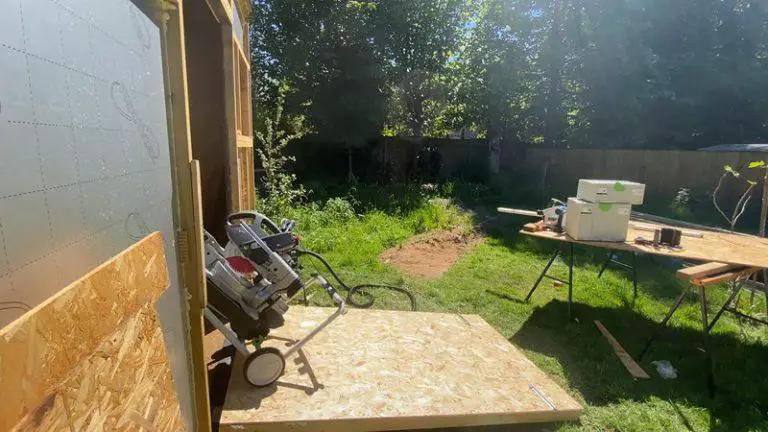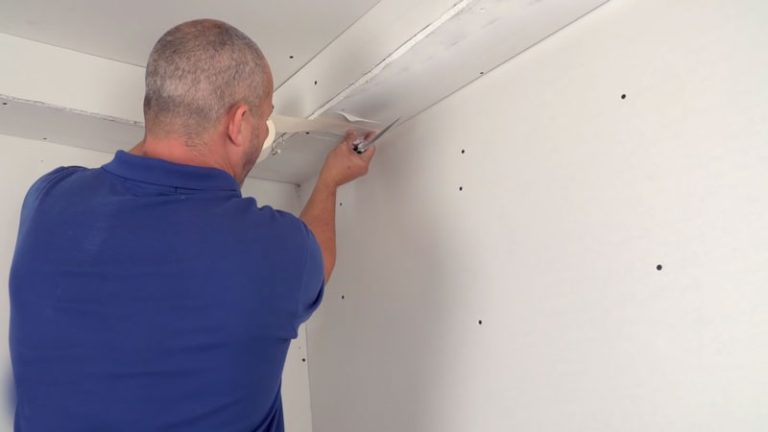Tile Spackle [What is It? How to Use?]

Tile spackle is a repair compound specifically designed for use on tiles. It is typically made from a mixture of gypsum and adhesive, and is used to fill in holes, chips, and other imperfections in tiles.
Tile spackle is a convenient and cost-effective solution for repairing small imperfections in tiles without having to replace the entire tile. It is easy to work with and can be found at most hardware stores or home improvement centers.
In this article, we will delve deeper into the various types of tile spackle, the benefits of using it, and how to use it effectively.
You'll Learn About
Tile Spackle
Tile spackle is a type of repair compound specifically designed for use on tiles. It is usually made from a mixture of gypsum and adhesive, and is used to fill in holes, chips, and other imperfections in tiles. It is typically applied using a putty knife or other similar tool, and can be sanded smooth once it has dried.
Tile spackle is a useful tool for anyone looking to repair small imperfections in their tiles without having to replace the entire tile. It is especially useful for older tiles that may be hard to match, as it allows you to repair and blend in the imperfection without having to find an exact match for the tile.
Tile spackle is typically easy to work with and can be found at most hardware stores or home improvement centers. It is typically applied in thin layers, allowing you to build up the repair to the desired level. Once it is dry, it can be sanded smooth and painted to match the surrounding tiles.
Overall, tile spackle is a useful and convenient tool for anyone looking to repair small imperfections in their tiles without having to go through the process of replacing them.
Types of Tile Spackle
There are several different types of tile spackle available on the market, each with its own unique properties and benefits.
Gypsum-based
Gypsum-based spackle is made from a mixture of gypsum and glue. It is a strong and durable option that is easy to work with and can be sanded smooth once it has dried. This type of tile spackle is a good choice for filling in large holes or chips in tiles.
Adhesive-based
Adhesive-based spackle is made from a mixture of adhesive and a filler material, such as aluminum oxide. It is a more flexible option that is ideal for filling in smaller cracks and imperfections in tiles. Adhesive-based spackle is also resistant to moisture, making it a good choice for use in bathrooms or other areas prone to moisture.
Made of Different Types of Fillers
Other types of tile spackle may be made from different types of fillers or may be formulated for specific uses, such as repairing tiles that are exposed to high levels of heat or UV radiation. It is important to read the label and choose the right type of tile spackle for your specific repair needs.
Benefits of Using Tile Spackle
There are several benefits to using tile spackle for repairing imperfections in tiles:
Saves Money and Time
Replacing a tile can be expensive and time-consuming, especially if you need to match an older or hard-to-find tile. Tile spackle allows you to repair small imperfections in tiles without having to replace the entire tile, saving you both time and money.
Allows for Seamless Repairs
Tile spackle can be applied in thin layers, allowing you to build up the repair to the desired level. Once it is dry, it can be sanded smooth and painted to match the surrounding tiles, resulting in a seamless repair that is almost invisible.
Can Be Painted
Tile spackle is typically paintable, allowing you to match the color of the tiles and create an even more seamless repair. This is especially useful for tiles that are hard to match or have an unusual color.
Overall, using tile spackle can help you repair small imperfections in tiles without having to go through the expense and hassle of replacing the entire tile. It is a convenient and cost-effective solution that can help you maintain the appearance of your tiles and extend their lifespan.
How to Use Tile Spackle
Using tile spackle is a relatively straightforward process, but it is important to follow the steps carefully to ensure a successful repair. Here is a step-by-step guide on how to use tile spackle:
Gather the Necessary Tools
You will need a putty knife or other similar tool to apply the spackle, as well as sandpaper and a paintbrush or roller for finishing the repair.
Clean the Area to Be Repaired
It is important to clean the area thoroughly before applying the spackle. Use a mild cleaner or soap and water to remove any dirt or debris from the area.
Apply the Spackle
Using the putty knife, apply the spackle in thin layers, building up as needed to fill in the hole or imperfection. Be sure to smooth out the spackle as much as possible to minimize the need for sanding later.
Allow the Spackle to Dry Completely
Follow the manufacturer’s recommended drying time for the spackle you are using. It is important to allow the spackle to dry completely before moving on to the next step.
Sand the Spackle Smooth
Once the spackle is dry, use sandpaper to smooth out any rough edges or unevenness. Be sure to sand gently to avoid damaging the surrounding tiles.
Paint the Spackle
If desired, you can paint the spackle to match the surrounding tiles. Use a paintbrush or roller to apply a thin layer of paint, allowing it to dry completely before applying a second coat if necessary.
Following these steps should result in a seamless repair that is almost invisible. With practice, you will become more adept at using tile spackle and be able to repair imperfections in your tiles with ease.
Tips for Using Tile Spackle
Here are a few additional tips to help you get the most out of your tile spackle:
Practice Good Ventilation
Many types of spackle contain chemicals that can be harmful if inhaled. Be sure to open windows or use a fan to create good ventilation while working with spackle.
Use a Small Amount of Water to Smooth Out the Spackle
Adding a small amount of water to the spackle can help smooth it out and make it easier to work with. Just be sure not to add too much water, as this can weaken the spackle and cause it to crack or peel.
Experiment With Different Techniques
Every repair job is different, and what works for one person may not work for another. Don’t be afraid to experiment with different techniques and tools to find what works best for you. With practice, you will become more skilled at using tile spackle and be able to make seamless repairs with ease.
Can Spackling Be Used as Grout?
Grout and spackling are two different materials with different properties and applications. Grout is a mixture of water, sand, and cement used to fill the gaps between tiles or bricks in order to hold them in place. On the other hand, spackling paste is a type of filler used to repair holes, cracks, and dents in drywall and other surfaces.
Advantages of Using Spackling as Grout
Availability
Spackling paste is readily available at most hardware stores and can be found in different formulations to suit various applications
Ease of Application
Unlike traditional grout, spackling paste is easy to apply and does not require any special tools or skills. All you need is a putty knife or spatula to spread the paste over the gaps between the tiles or bricks
Drying Time
Spackling paste dries much faster than traditional grout, which can take days to cure and harden. Spackling paste can be painted over or sanded down within a few hours of application
Cost-effective
Spackling paste is often less expensive than traditional grout, making it a cost-effective alternative for small projects
Disadvantages of Using Spackling as Grout
Durability
Spackling paste is not as durable as traditional grout and is not suitable for areas with heavy foot traffic or heavy loads. Over time, it can shrink, crack, or even fall out of place, leaving your tiles or bricks unsupported
Water Resistance
Spackling paste is not water-resistant, so it is not suitable for use in wet areas such as showers or bathroom wet walls.
Aesthetics
Spackling paste does not have the same look as traditional grout, so it may not be suitable for use in areas where appearance is a concern
While spackling paste can be used as a temporary solution for grouting mini bricks or tiles, it is not a long-term solution. Traditional grout is still the preferred material for filling the gaps between tiles or bricks due to its durability, water resistance, and esthetics.
If you are unsure about the best grout for your project, it is always best to consult with a professional.
Final Thoughts
Tile spackle is a useful and convenient tool for anyone looking to repair small imperfections in their tiles without having to go through the process of replacing them. It is typically made from a mixture of gypsum and adhesive, and is easy to work with and paintable.
Using tile spackle can save you both time and money, and allows you to make seamless repairs that blend in with the surrounding tiles. If you have small imperfections in your tiles that you would like to repair, consider giving tile spackle a try.
For more information on tile spackle and other repair techniques, there are numerous resources available online or at your local hardware store or home improvement center.




